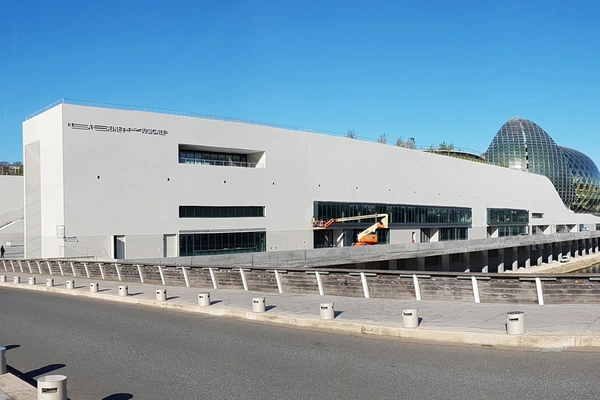Cologne - Deutschland
Façade elements made of glass fiber reinforced concrete produced with additives especially developed for this project by MC-Bauchemie adorn the façade of the Kaiser Hof in Cologne.They have a particularly smooth surface, one of the highest grade of fair-faced concrete (SB 4), a matt appearance and a high weather resistance.
Name
Architectural concrete for the Kaiser Hof façade
Country
Cologne - Deutschland
Fields of Expertise
Categories
The development of steel-free reinforced concretes opens up ever greater design freedom for architects worldwide. Creative opportunity that just a few years ago would have been inconceivable has resulted in steady growth in the use of high-quality architectural concrete – as illustrated by the new Kaiser Hof office complex in Cologne.
The Kaiser Hof is a new, exclusive office building on the historic Kaiser Wilhelm Ring in Cologne. One of its striking features is the ingenious façade covering approx. 5,000 m², which has been elegantly designed with lightweight panels made of glass fibre-reinforced architectural concrete. Differently aligned pilasters in the bright outer façade create an extraordinary pattern of shadows that changes permanently with the incidence of light. The Kaiser Hof thus provides one of the true visual highlights of the Cologne cityscape. In all, the Kaiser Hof’s façade consists of 1619 three-dimensionally shaped concrete elements and 137 flat panels.
Steel-free reinforced concretes
Creative, organic and vivid building envelopes made of curtain walling have experienced growing popularity over the years. However, this construction method requires elements that are as thin-walled, lightweight and freely formable as possible.

MC developed specially optimised additives for the project to ensure the excellent flowability and high mix stability in the fresh concrete required to achieve the complex geometry of the façade elements.
© MC-Bauchemie 2025
Classic steel-reinforced concrete cannot be used due to the minimum concrete coverage required. Consequently, steel-free reinforced concretes are being used, for which no conventional minimum concrete coverage of the rebar is required. These facilitate the creation of delicate concrete structures offering all the advantages of lightweight construction. As alternative reinforcement systems, short fibres, textile mats or rods made of alkali-resistant glass or carbon are used. MC has long been involved in the development of this technology. The façade of the new building at MC’s Bottrop site was also clad with concrete elements made of textile-reinforced concrete [see MC aktiv 3/2018].
Novel material
The Kaiser Hof required a particularly smooth surface compliant with the highest grade of fair-faced concrete (SB 4), coupled with a matt appearance and enhanced weather resistance. The free-form elements were produced with the glass fibre concrete BetoLamina®-Cast, which was developed by Steinbeis Innovation Centre FiberCrete in Chemnitz, Germany. In addition to very good mechanical properties and outstanding durability, the glass fibre concrete exhibits exceptional exposed/fair-faced concrete quality. It also exhibits high early and 28-day strengths and exceptional durability. Due to the complex geometry of the façade elements, excellent flowability combined with high mix stability of the fresh concrete was essential. The optimised additives required were therefore developed in close cooperation with the concrete technologists of MC’s Research & Development department.
The creation of these special façade elements through the smooth interaction of project partners Steinbeis Innovation Centre, Medicke Metallbau GmbH of Glauchau, application company Fiber-Tech of Chemnitz and MC illustrates what can be done with the huge design potential that architectural concrete offers.






More References
We are continuously improving our website and we use cookies for this purpose. For an optimal user experience, we recommend that you accept them. Otherwise, parts of the page will be deactivated in the display in accordance with data protection regulations.